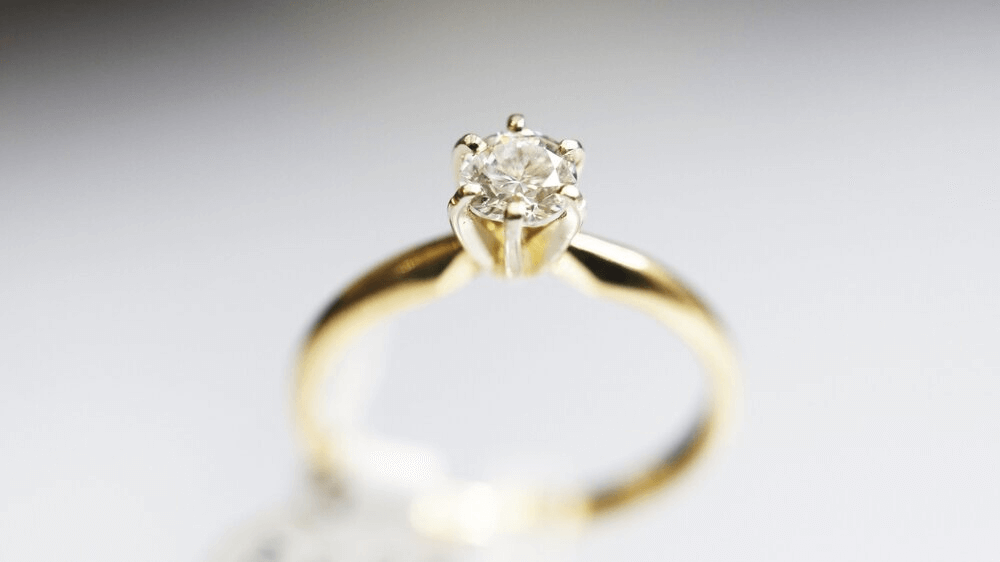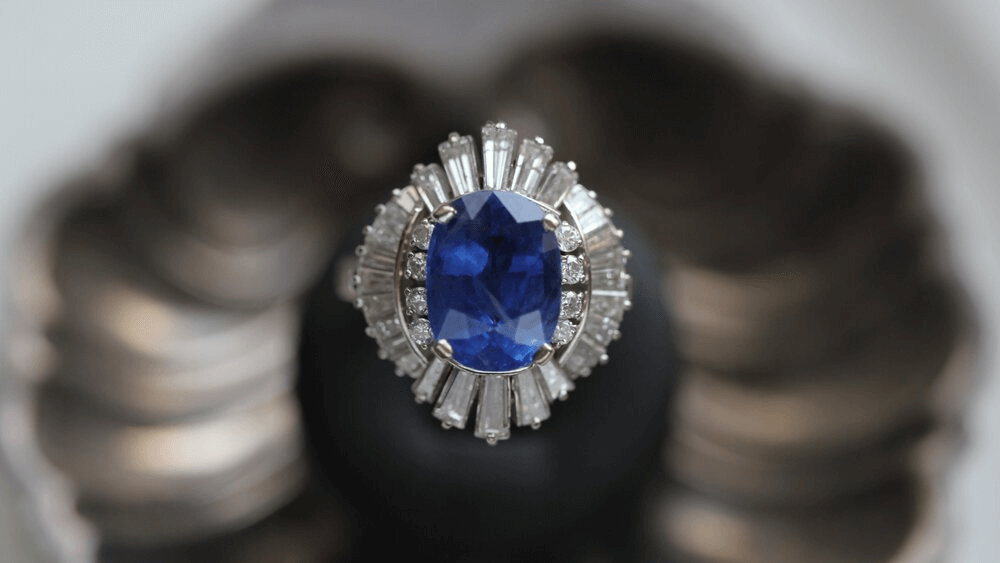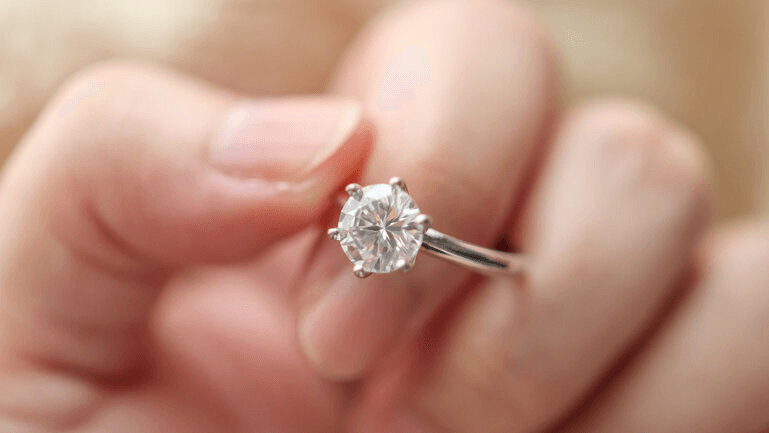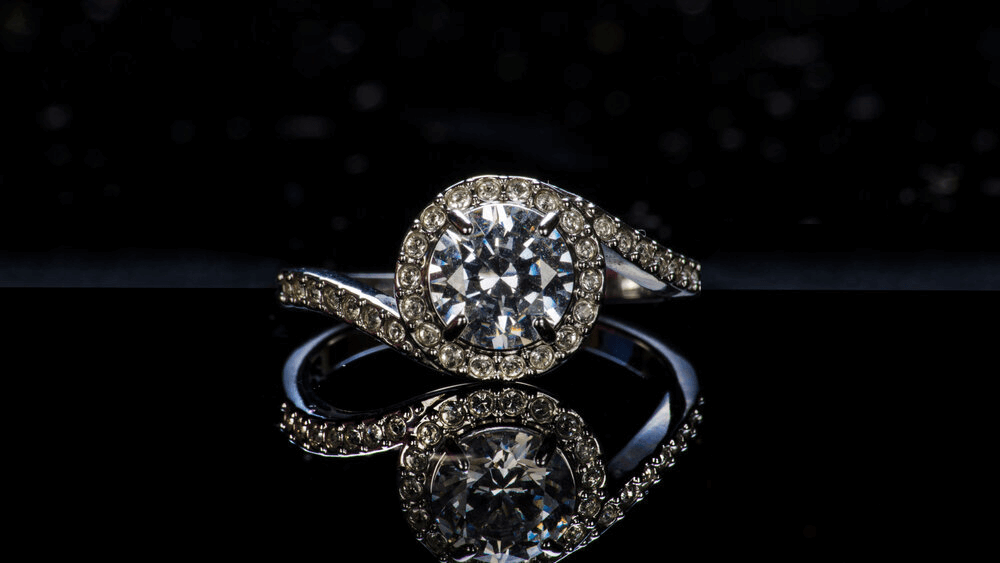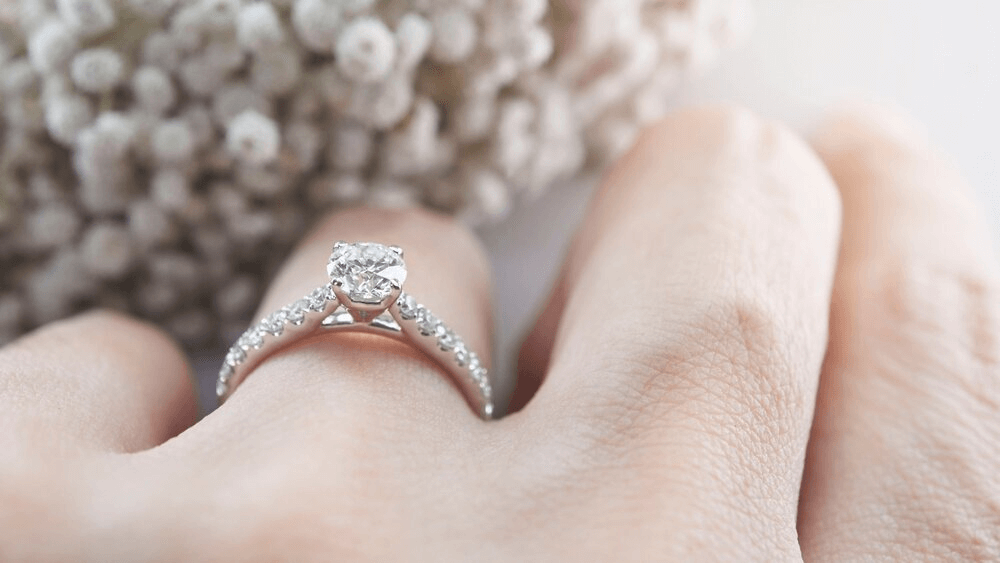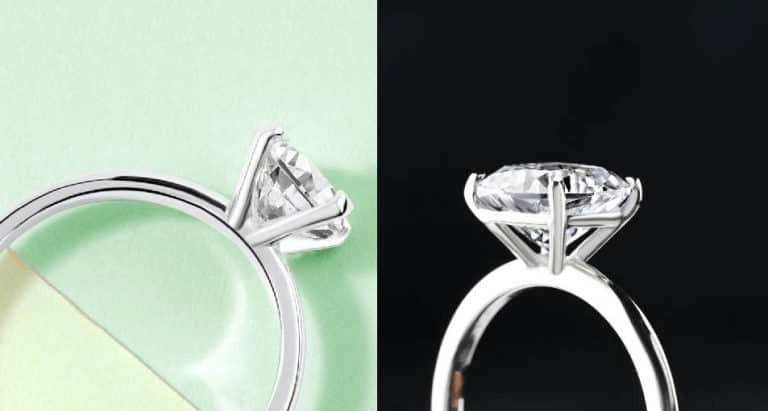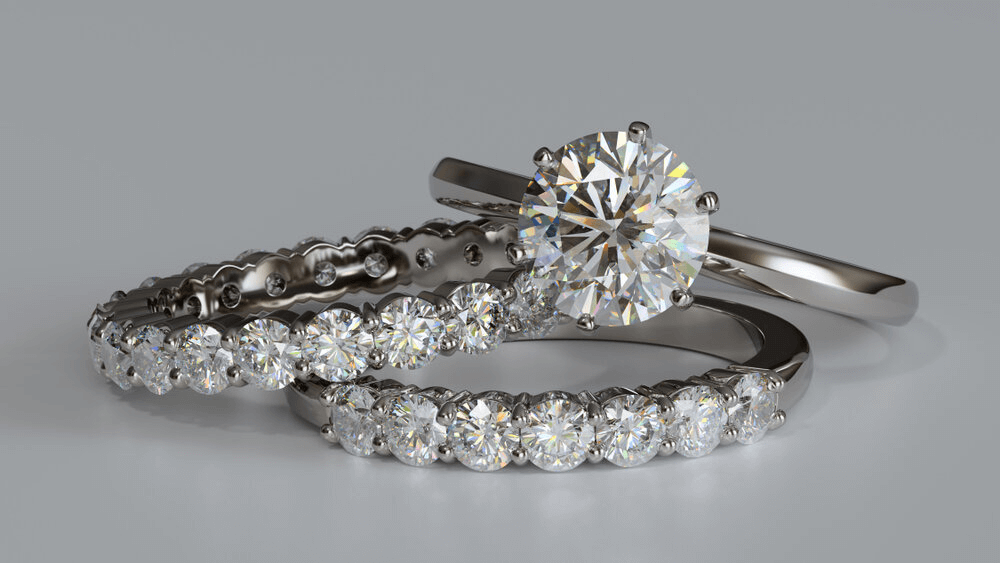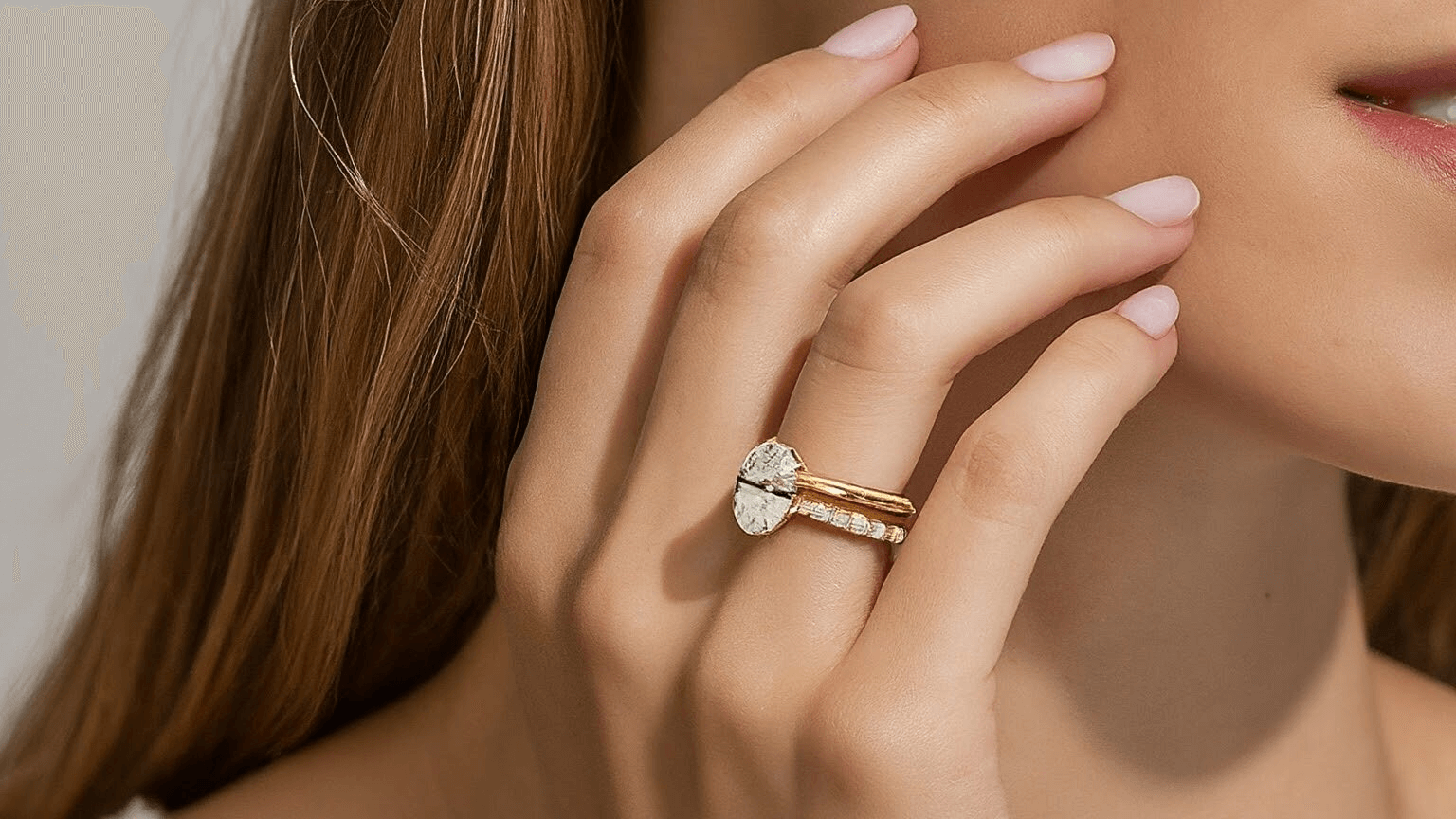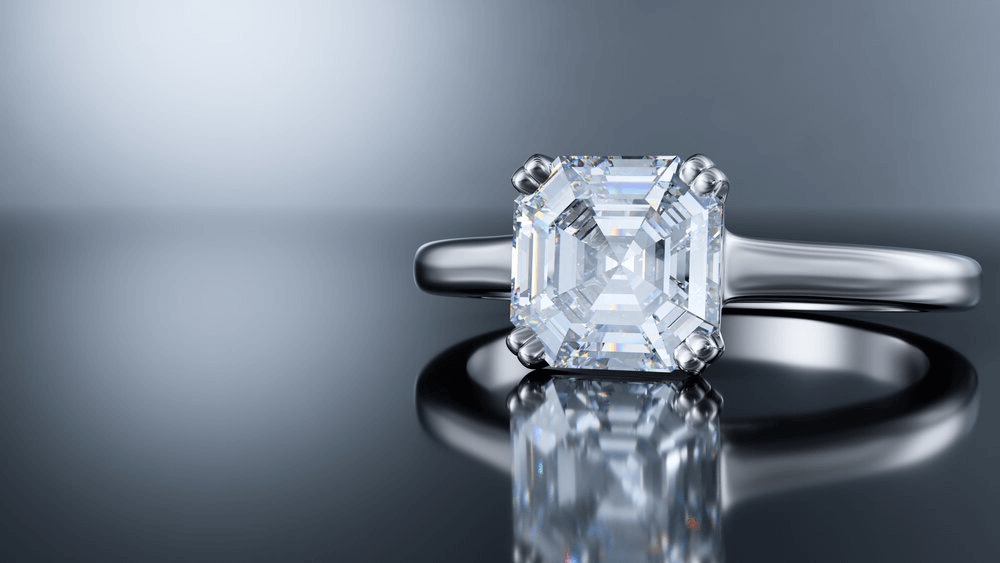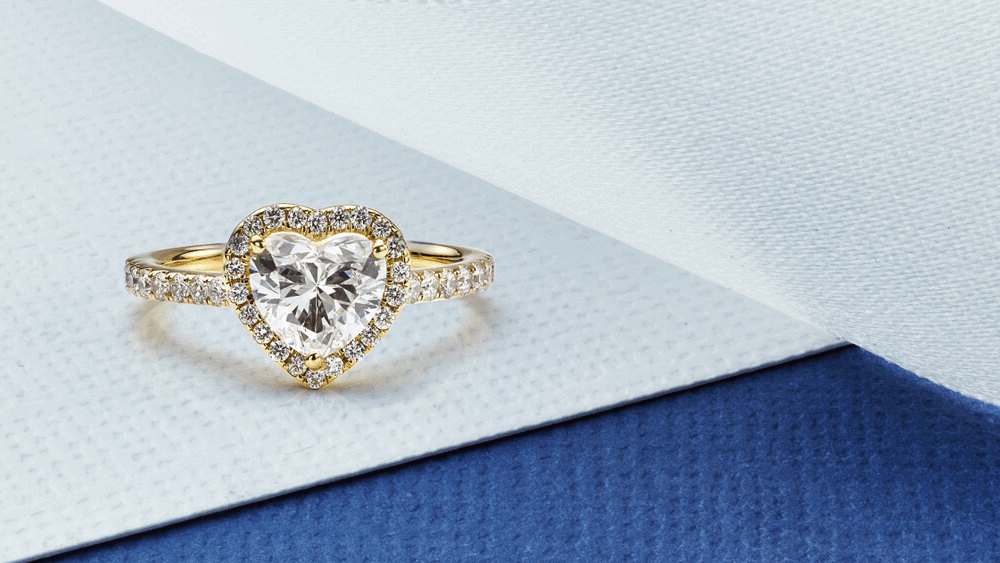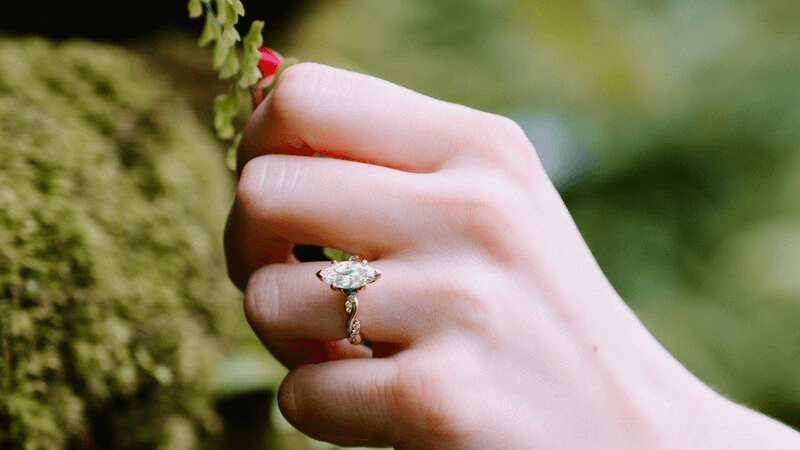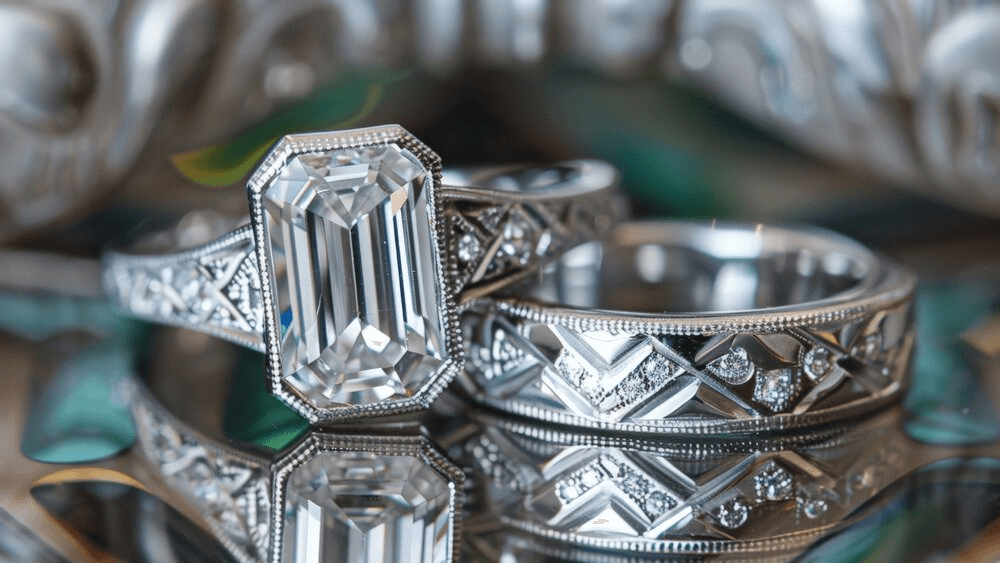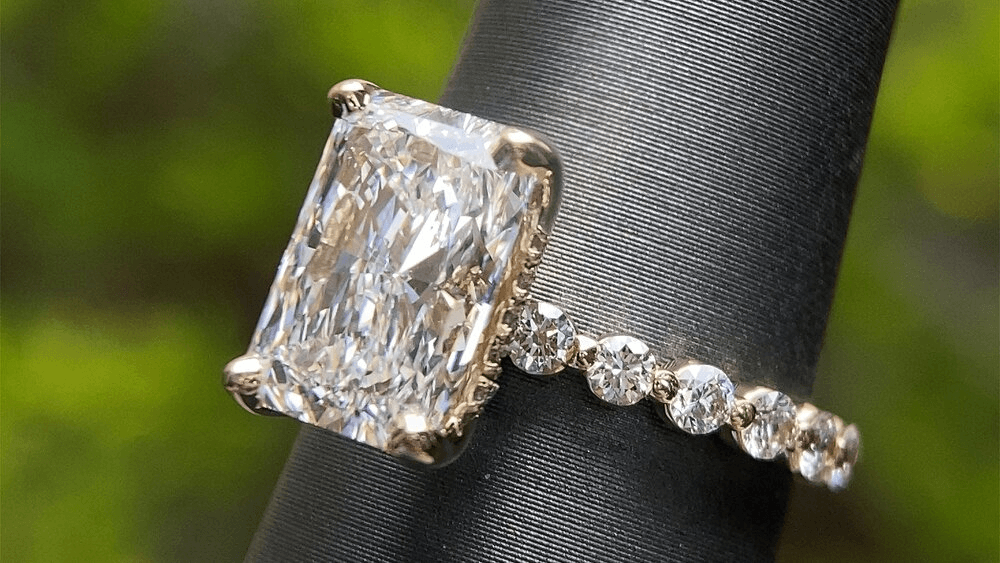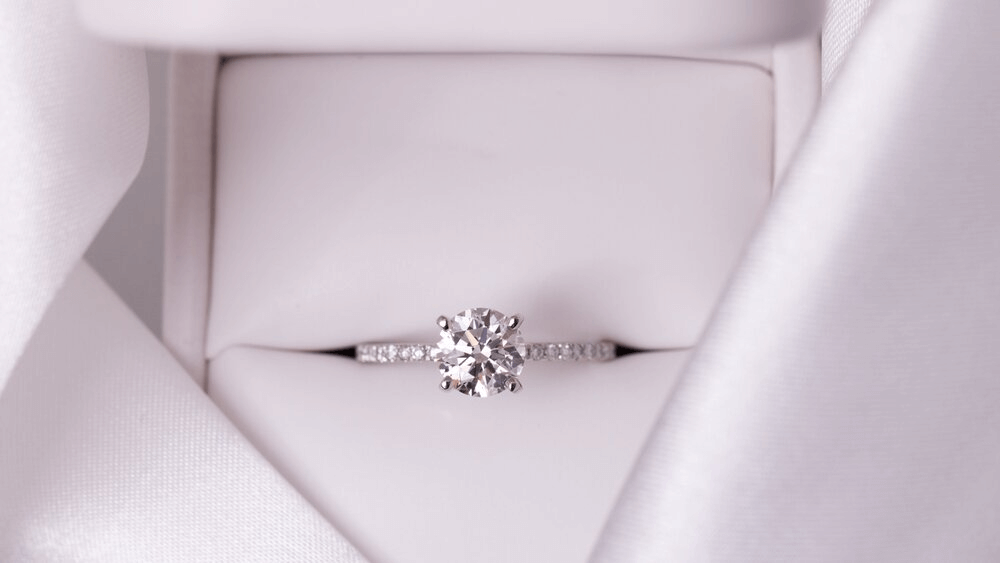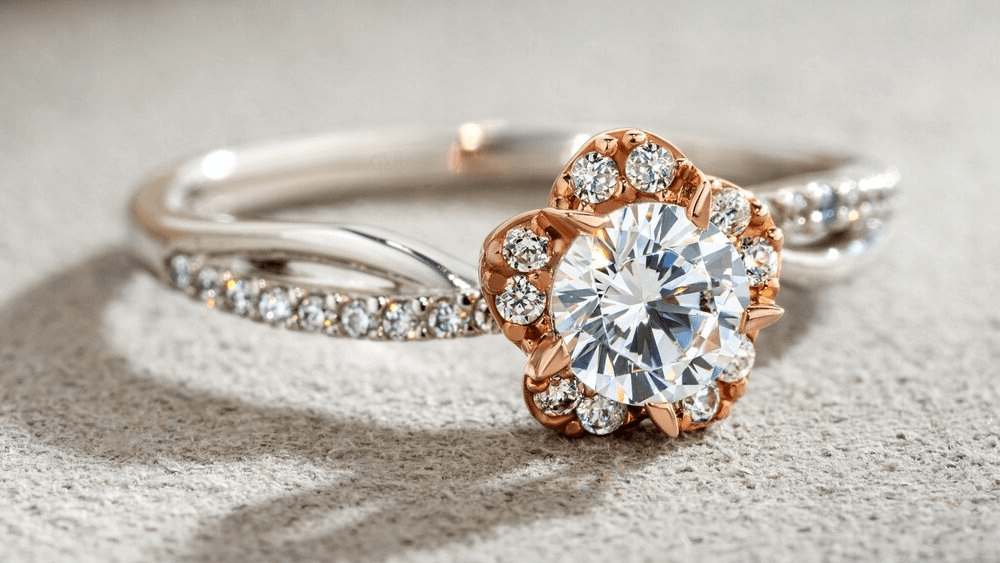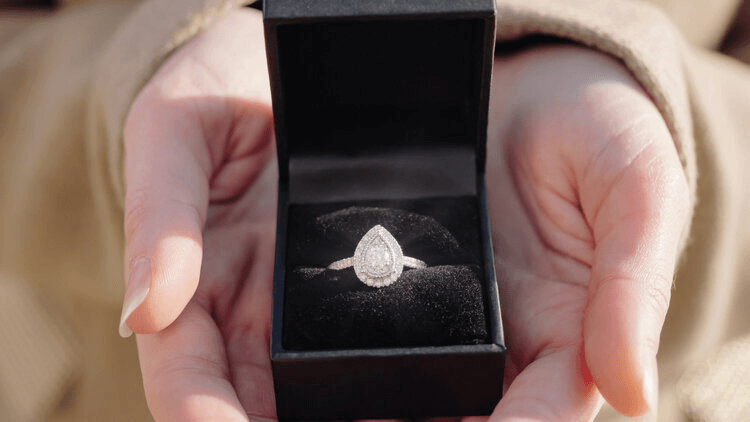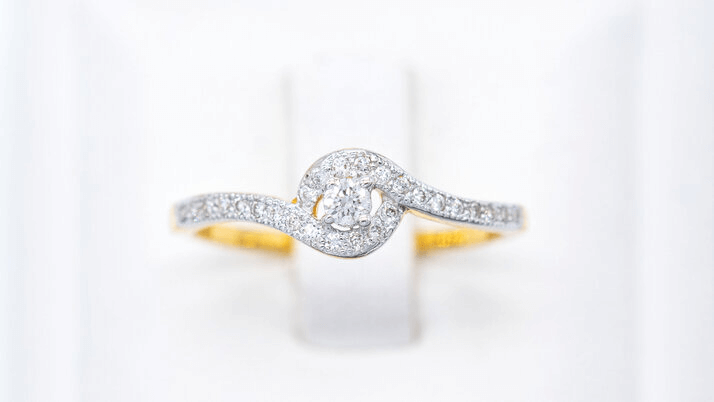Art Nouveau Engagement Rings: Discover the Timeless Romance!

By Gary A.

Edited by Olivia H.
Published Aug 8, 2024
Edited on Dec 18, 2024
Art Nouveau engagement rings capture the essence of nature’s beauty with their intricate designs and flowing lines—perfect for those seeking a blend of vintage charm and timeless elegance.

Navigate This Guide:
- 5 Quick Tips for Finding the Art Nouveau Engagement Ring of Your Dreams
- Introduction to Art Nouveau Engagement Rings
- The Dawn of Art Nouveau
- The Hallmarks of Art Nouveau Engagement Rings
- Art Nouveau vs. Art Deco: Understanding the Distinctions
- Shopping Guide: Finding Your Art Nouveau Engagement Ring
- Caring for Your Art Nouveau Ring
- Our Expert Take
- 7 Frequently Asked Questions about Art Nouveau Engagement Rings
Before we dive deeper into the specifics, here are some practical tips to help guide your decision-making process:
5 Quick Tips for Finding the Art Nouveau Engagement Ring of Your Dreams
Research Authenticity and Period Details:
Art Nouveau rings are characterized by their nature-inspired motifs, curvaceous lines, and often, the use of enamel. Familiarize yourself with these details to ensure the ring is genuinely from the Art Nouveau period or is a faithful modern representation.
- Tip 1: Examine the Craftsmanship:
- Look closely at the intricate designs, especially the enamel work. Authentic Art Nouveau pieces will have high-quality craftsmanship. If the enamel is chipped or the metalwork seems rough, it might either be a poorly maintained antique or a subpar modern imitation.
- Tip 2: Check for Hallmarks:
- Genuine antique Art Nouveau rings might have hallmarks indicating their metal content or the jeweler who made them. While the absence of a hallmark doesn’t necessarily mean it’s not genuine (it might have worn off), a hallmark can provide added assurance.
- Tip 3: Consider the Gemstone Durability:
- Art Nouveau rings often feature gemstones like moonstone, opal, or pearls, which are softer and more prone to damage. If you’re planning for everyday wear, consider the durability of these stones or think about using harder gemstones like sapphires or diamonds in an Art Nouveau setting.
- Tip 4: Ask About Provenance:
- Especially for antique rings, ask the seller about the ring’s history or provenance. This can not only help confirm its authenticity but also adds to the story and value of the piece.
- Tip 5: Be Cautious of “Too Good to Be True” Prices:
- Authentic Art Nouveau rings, given their age and unique craftsmanship, can be quite expensive. If a price seems too good to be true, it might be a reproduction or not genuine.
Now that you’ve got these practical tips, use Jeweler AI below to find the perfect engagement ring that suits your style and budget:
Introduction to Art Nouveau Engagement Rings
There are very few movements in art and design that prove as distinctive – and as easily seductive – as art nouveau. Its poetic reverence for nature combines with a strong, bold, architectural approach to creating shape and form. The organic is always measured against a very sophisticated and elegant vision.
In simpler terms, if you and your partner share a love of nature, florals, and flowing design but don’t want to pick something that feels unstructured and too organic, then Art Nouveau is the perfect choice. While it’s a distinctly vintage style, modern art nouveau rings are capable of encapsulating a much broader array of styles and preferences. In other words, you don’t have to feel like your ring belongs in Belle Époque period. Then again, there’s a vintage-lover in all of us.
In this guide you’ll find all you need to know.
The Dawn of Art Nouveau
Art Nouveau is a very ornamental, organic style of art and design that draws a lot of inspiration from the natural world. When it first entered the scene in the late 1800s, it was quickly popularized in jewelry and fashion, but also in architecture, interior design, and illustration. Around the world, you’ll find some incredible – and very famous – examples of our love affair with art nouveau. The Secession in Vienna and the Lavirotte Building in Paris are two perfect examples if you’re looking for inspiration.
The movement is thought to have originated in England as a direct response to growing industrialization. As the world started to grow increasingly utilitarian, with more factories and no-frills developments popping up with every passing month, many artists and designers were looking to rebel with a more emotive – and, simply put, more beautiful – approach to creation.
Clearly, their work resonated with many people. From train stations to hotels, museums and homes, the addition of elements designed to appeal to our love of beauty, rather than practicality, continues to this day.
The Hallmarks of Art Nouveau Engagement Rings
As with virtually any engagement ring style, there is no single set of design features that make a ring definitively art nouveau. Instead, there are elements that can be used in small measures or larger, depending on your taste. They can be combined with elements that are considered characteristic of other styles and movements, or they can be used in singularity to create a ring that positively screams, ‘This is art nouveau!’
Signature Elements and Motifs
Some of the most distinctive features of art nouveau in jewelry design include:
- Complex metalwork is often created using filigree techniques to emulate natural shapes like leaves, vines, ferns, and petals. Sometimes, animals and insects are also incorporated into the design.
- Designs that take up space. The most literal art nouveau engagement rings don’t tend to be subtle; they often reach beyond the usual ‘parameters’ of a ring, a little like a garden overgrowing the borders.
- Color. This one isn’t essential by any means, but a lot of rings characteristic of that Belle Époque feature a combination of clear diamond, and fancy color diamonds in romantic shades of red, pink, yellow, blue, and green.
- The ‘Whiplash Line’. Again, not essential – and often not advisable on jewelry that’s going to be worn everyday – but a consistent trait of art nouveau jewelry, in general, is a long, free-flowing line known as the whiplash line. Think of the way a new fern, yet to unravel, winds up from the earth – or, alternatively, the way a long lock of hair tumbles down a woman’s shoulder. That’s a whiplash line.
- Asymmetry. While art nouveau introduces some sense of structure and order to nature, it avoids creating anything too practiced-looking. Jewelry often features asymmetries, even if it’s just between the shapes of one petal and the next.
Materials and Techniques
As you might expect, these designs use the very best materials available. Art Nouveau is about indulging our love of life’s finest and most beautiful things, and that includes:
- Fine Metals
Think gold and platinum – mixed metal colors like rose, white, and yellow – and plenty of it. While these designs needn’t look bulky or overdone, there’s no skimping! - Diamond
This one shouldn’t come as a surprise. If you’re looking to celebrate the finest and most beautiful things in life, then there is no substitute for diamond. Back when art nouveau was first popular, diamonds weren’t as available as they are today, so other gemstones were also used as accents. These days, most jewelry designers favor diamond above all other gemstones, using fancy color diamonds in place of ruby, emerald, and sapphire. - Filigree and Milgrain
Both are very technical, complex, and delicate techniques that master jewelers use to add visual intrigue, texture, and detail into the metalwork. - Cloisonné
Another technique that master jewelers can use to embrace art nouveau. This one isn’t as common in engagement rings, as the enamel used to introduce color isn’t as durable as metal – instead, a similar vibe can be achieved with colored stones. - Engraving
This one probably sounds more familiar. From floral designs to romantic sentiments, art nouveau rings are never short on this finishing touch.

Art Nouveau vs. Art Deco: Understanding the Distinctions
While the two may sound similar – and are often mentioned alongside one another – art deco is, in many ways, the antithesis to art nouveau. While art nouveau favors inspiration from nature, organic shape, free flowing lines, asymmetry and intricate detailing, art deco is characterized by an appreciation of simpler forms, symmetry and repetition, geometry, and larger, simpler shapes.
The Geometric Boldness of Art Deco
Art deco was repolarized in Baz Luhrmann’s remake of The Great Gatsby. Set in the roaring 20s, the elegance of those repeating, geometric patterns is beautifully translated into jewelry design, too.
The two are, however, very different.
Shopping Guide: Finding Your Art Nouveau Engagement Ring
Here, you have two options. On the one hand, you can focus on vintage engagement rings from the late 19th and early 20th century. There’s a certain romanticism to finding a ring that’s been on this earth for generations already, particularly if it has been well-loved and cared for.
The trouble is, vintage engagement rings were made using inferior tools and, in many instances, diamonds that were mined using unethical practices. The diamond industry has come a long way since the Victorian era.
The other option is, of course, to buy a new ring design that has been inspired by art nouveau. Visually, they will look very similar – just fresher and more intricate, thanks to the new tools jewelers have to work with alongside their expertise.
Modern Interpretations
Focus on the elements you love, rather than trying to cram in every single art nouveau element. Think of painters who use a specific color palette, rather than trying to get every single shade of every single color into a painting. It’s about measuring the theme of the ring against wearability and beauty.
Start by browsing our ring styles and waiting to see what jumps out at you. Remember that the style you’re going for can be complimented by the wedding band (when the time comes), so try to think of the bigger picture while you’re scrolling. Our Jeweler AI can help you the rest of the way.
Caring for Your Art Nouveau Ring
Since art nouveau rings tend to be heavy on intricate details, you’ll want to pay particular attention to your ring’s upkeep. A regular soak in warm, soapy water will enable you to stay on top of the dirt and oils your ring will be exposed to week in and week out, but it won’t get everything.
Don’t invest in any tools like scrapers designed to reach those hidden areas. It’s much better (and safer) to take your ring to the jewelers once every six months or so. They have the tools and know-how to clean a ring without scratching it or loosening the diamond’s setting, and they can check it over at the same time for any wear and tear.
Our Expert Take
Art nouveau is, rightfully, one of the most beguiling styles out there. Romantic, indulgent, and concerned only with the most beautiful things in this world, it makes for the perfect inspiration for any engagement ring. Focus on quality rather than quantity – don’t overburden your ring with design elements, and focus on letting the diamond take center stage.
7 Frequently Asked Questions about Art Nouveau Engagement Rings
- Q: What defines an Art Nouveau engagement ring?
- A: Art Nouveau engagement rings are known for their unique, nature-inspired motifs, curvaceous lines, intricate designs, and often, the use of colorful enamels. These rings embody the Art Nouveau movement’s emphasis on handcrafted artistry and the beauty of natural forms.
- Q: How can I tell if an Art Nouveau engagement ring is authentic?
- A: Authentic Art Nouveau rings may feature hallmarks or maker’s marks, high-quality craftsmanship, especially in the enamel work, and period-appropriate design elements like whiplash lines and nature-inspired motifs. Researching these details can help in identifying genuine pieces.
- Q: Are Art Nouveau engagement rings suitable for daily wear?
- A: While Art Nouveau rings are exquisite, they often feature softer gemstones like opal, moonstone, or pearls, which require careful handling. If you plan to wear the ring daily, consider the durability of these stones or opt for a design that incorporates harder gemstones in an Art Nouveau-inspired setting.
- Q: Can I find modern rings that are inspired by Art Nouveau?
- A: Yes, many jewelers create modern engagement rings inspired by the Art Nouveau era. These rings incorporate the characteristic designs, motifs, and craftsmanship of Art Nouveau but may use more durable materials and gemstones for everyday wear.
- Q: What metals are typically used in Art Nouveau engagement rings?
- A: Art Nouveau rings were commonly made with gold, silver, and, in some luxurious pieces, platinum. Modern reproductions may also use these metals to maintain the authentic feel of the period.
- Q: How do Art Nouveau and Art Deco engagement rings differ?
- A: Art Nouveau engagement rings focus on organic, flowing designs inspired by nature, with intricate details and curved lines. In contrast, Art Deco rings feature bold geometric shapes, streamlined designs, and a tendency towards symmetry and modernity, reflecting the technological advances of the time.
- Q: Where can I purchase an Art Nouveau engagement ring?
- A: Art Nouveau engagement rings can be found at antique jewelry stores, auctions, online marketplaces specializing in vintage jewelry, and from jewelers who create custom pieces inspired by historical designs.
Dive into elegance with Jeweler AI. Discover your perfect Art Nouveau engagement ring today.
FOLLOW-UP GUIDE SERIES





